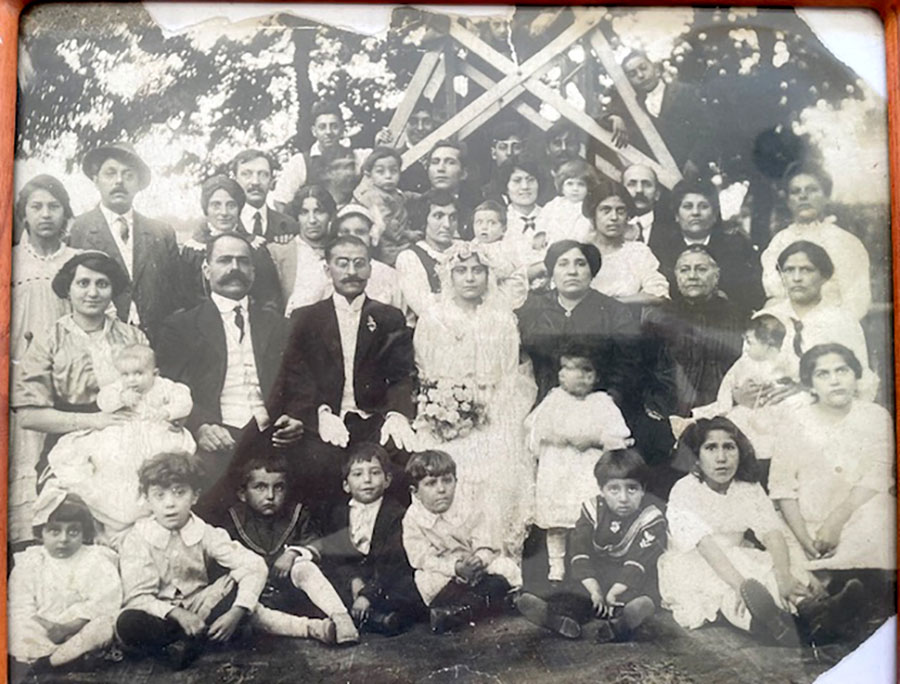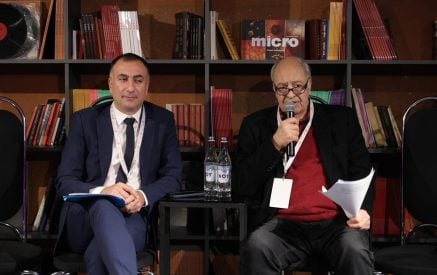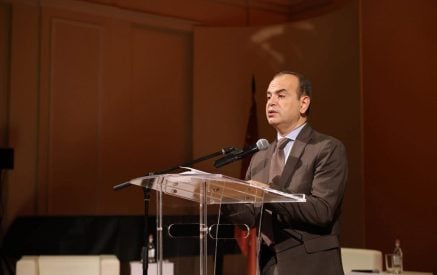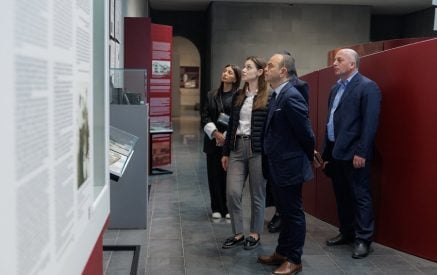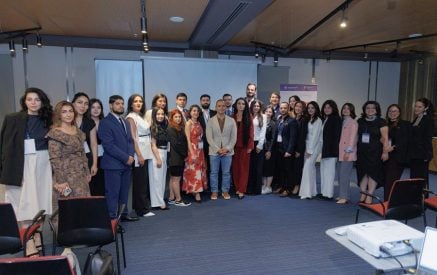by Stepan Piligian
Our identity can be compared to looking in a mirror. It tells us who we are and identifies the attributes that influenced our development. As Armenians in the diaspora, we are constantly searching for the pieces of our identity, given that branches of our tree were violently broken as a result of the Genocide. The unfortunate impact of living in the diaspora is that for many Armenians today, their identity is defined by the present tense. They accept the voids in our family networks from past tragedies and live for the present and the future. This is similar to watching a movie and skipping the beginning. For a growing segment of our community, however, the past is the key to unlocking the essence of our identity. Individuals such as George Aghjayan and Mark Arslan from the Armenian Immigration Project have responded to this demand with superb tools in genealogy and immigration research. Their contributions have been immense in satisfying the curiosity for answers about our past and its impact on our current identity. We all have our stories in this journey. Discovering our past reassembles the broken puzzle pieces of our identity.
In my family, the paternal branches have been fairly well defined. My father’s family is Western Armenian, with roots in Sepastia and Adana. As genocide survivors, my grandparents experienced the loss of an entire generation. Despite the fractured branches and blank pages, the pieces in our clan have been partially reconstructed and documented thanks to the incredible gift of my Uncle Paul, my father’s brother. With a detailed account of our lineage, there is a basis for educating and answering the questions of the new generation. It was through this type of research that we discovered, several years ago, a Turkish woman in Ankara who had a Piligian great-grandmother. She was a survivor of the Genocide from the same Sepastia village but was taken by a Turkish solider during the deportations into a forced marriage. As female descendants kept their identities private, she searched for descendants of a great-uncle who immigrated to the U.S. before the Genocide. We discovered that he came to Springfield on the same boat as my grandfather and left for parts unknown in 1923. Utilizing the available tools, we pieced together his remaining years and his grave location outside Pittsburgh. Our cousin was searching for her Armenian family. The term “hidden Armenian” suddenly became very personal.
Read also
My mother’s side of the family is more of a mystery, despite strong family relations. My grandfather Takvor was born and raised in the Dardanelles and undertook a perilous trip to America in 1910. He arrived alone and had no known relatives in this country. He shared stories of his youth with us, but with little detail on what became of his family. My grandmother was born in Cyprus and migrated to this country with her mother in 1902. Her two sisters were born shortly thereafter in Connecticut. We have vague descriptions of previous generations living in Western Armenia and eventually moving to Cyprus before my grandmother was born. They were purely anecdotal, and while I was growing up most of my family was happy to live in the present. My mom’s aunts integrated quickly into American society, and several intermarried generations ago. Most of the family was based in New Britain, Connecticut, where my grandparents raised their family, and New York City. The family was large and was unfortunately impacted by the church division. It would be many years before we would meet some of our relatives. This is a story far too common in our community. Two years ago, we attended the priestly ordination of a dear friend, Der Haroutiun Sabounjian, at the Holy Resurrection parish in New Britain. Our family was historically affiliated with St. Stephen’s (Prelacy). To my joy, I met many of my “lost” relatives at the ordination. One of the elder cousins had prepared a family tree to display our common bond through the Kevorkian clan. We have since researched those branches, adding to our knowledge of our roots.
In my youth, some of our Kevorkian family members would gather for weddings and anniversaries. My mom’s cousins and aunt moved to New York but always maintained their family connections. Two cousins of my generation would visit with their parents. We lost touch with each other over the years, but the identity generator rarely rests. I recently reconnected with one of those cousins and explored many family connections and open questions. The other cousin has lived in Maine for most of his adult life. I received an email from both of them about two months ago. It started with a simple question: “Where was our great-grandmother born?” I became aware that the daughter of my cousin Joe in Maine is very interested in her Armenian background and posed this question to her father. We haven’t seen each other in 30 years, but instantly the three of us began to frame the task. We knew that our great-grandmother, Takuhi Galgegian, came to America from Cyprus with her daughter. She also went by the name Victoria and lived in Hartford. Thirteen years later, my grandmother, Nevart, married my grandfather. Takuhi had a brother, Kevork (Harry) Kevorkian, who was the deacon and godfather of St. Stephen’s and the patriarch of the large Kevorkian family. We also knew that Takuhi was a charter member of the ARS in 1910. She passed away in the early 1950s before any of us were old enough to remember her.
We decided two things early on in our “reconnecting” dialogue. We would organize a road trip to New Britain to review cemetery records and visit the gravesites of the family, including Takuhi. We also decided to learn as much as we could through Arslan’s Armenian Immigration Project and websites such as Ellis Island. We learned a great deal. The family arrived on the ship “Patricia” in 1902 with Takuhi, her brother and their parents, Stepan and Sima. We reviewed the manifest and other clues including other family members. I remember visiting the gravesites in my youth. There is only one remaining offspring of Kevork and Mari Kevorkian. Sue is 103, and I had the good fortune to speak with her this week. She is simply remarkable for her age and still attends church. Our trip is planned for March 28, and we plan on visiting our elder cousin. She is already providing valuable clues to important questions. Apparently only Sima is buried in New Britain. Her husband Stepan had a desire to visit Cyprus some time after they arrived in 1902. He traveled with his son Kevork, but unfortunately Stepan passed away in transit. The ship’s captain wanted to follow protocol and bury him at sea, but Kevork insisted that his father be buried at the nearest port of call. Stepan’s remains are buried in Alexandria, Egypt. This man and his wife were my great-great-grandparents. It was beyond my expectations to think, with our national tragedies, that I would ever have knowledge of family from that generation. We will meet with the cemetery officials to determine what documentation they have on Takuhi’s birthplace while we continue the genealogical and immigration search. It will also be an opportunity to pray for the souls of these founders of our family branch in this country.
The bonds created by family lineage are eternal. There are times when they become dormant or even broken due to unfortunate conflicts, but the lines carry a level of commonality that transcends any earthly distractions. We are four generations removed from these ancestors, but the questions remain, because the answers are a part of who we have become today. We often hear that we never asked or talked about these issues when our preceding generations were alive. For many Armenians, the trauma associated with their immigration motivated our families to live in the present and build a better future. The past was simply too painful. In some cases, this segment of our identity can be lost. To counter this possibility, we have digital tools today that give us access to information previously unavailable to the general public. I remember the joy in my heart when I read about the ship that my 18-year-old grandfather arrived on in America. He and others from his village traveled as unmarried men to avoid service in the Ottoman Army (during the disastrous Balkan Wars and just prior to WWI) and earn money for their families. It opened new windows into his early life, before the events that have become a major portion of our family history. Before his service as an Armenian Legionnaire, his earlier years were filled with incredible experiences that we pieced together.
This is a journey that each of us can take. The benefits are remarkable. Pieces of our individual family puzzle have become alive. With each new piece of knowledge, I feel a bit more whole in my identity. Along the way, we make important connections, or in this case, reconnections. I have vivid and important memories of my cousins during our youth. This quest for answers about our common ancestry has afforded me the opportunity to build new relationships. By learning about our past, we strengthen the present and future. The journey to discovering one’s identity can start at any interval in life and has no known endpoint. As long as we have an appetite for knowledge, the learning opportunity is available. We are not certain what we will learn this week, but new doors will open that will take us closer to filling the voids. We may never fully understand, but that may inspire us to continue the challenge. Often the impetus for this effort comes from younger generations who are further removed and thus may have less understanding. My Uncle Paul taught us that each generation has a responsibility to share this knowledge with the succeeding branches and pursue the questions unanswered. It is a gift we give to each other while honoring the memory of those who contributed to what we have become. We should all take the time to invest in our identity by understanding the past in order to strengthen our torn branches.
Photo credit: Stepan Piligian’s grandparents Nevart and Takvor Harotian on their wedding day in 1915




















































